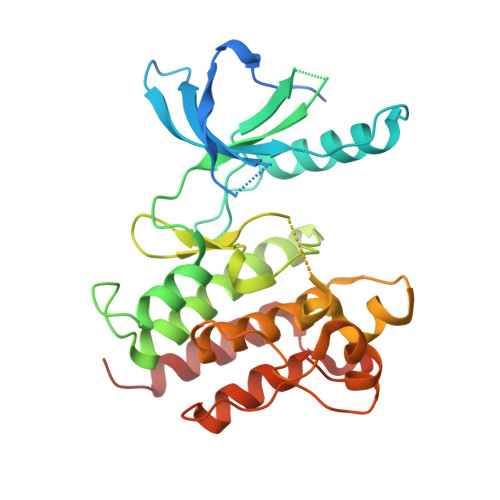Discovery of Novel Small Molecule Mer Kinase Inhibitors for the Treatment of Pediatric Acute Lymphoblastic Leukemia.
Liu, J., Yang, C., Simpson, C., Deryckere, D., Van Deusen, A., Miley, M.J., Kireev, D., Norris-Drouin, J., Sather, S., Hunter, D., Korboukh, V.K., Patel, H.S., Janzen, W.P., Machius, M., Johnson, G.L., Earp, H.S., Graham, D.K., Frye, S.V., Wang, X.(2012) ACS Med Chem Lett 3: 129-134
- PubMed: 22662287
- DOI: https://doi.org/10.1021/ml200239k
- Primary Citation of Related Structures:
3TCP - PubMed Abstract:
Ectopic Mer expression promotes pro-survival signaling and contributes to leukemogenesis and chemoresistance in childhood acute lymphoblastic leukemia (ALL). Consequently, Mer kinase inhibitors may promote leukemic cell death and further act as chemosensitizers increasing efficacy and reducing toxicities of current ALL regimens. We have applied a structure-based design approach to discover novel small molecule Mer kinase inhibitors. Several pyrazolopyrimidine derivatives effectively inhibit Mer kinase activity at sub-nanomolar concentrations. Furthermore, the lead compound shows a promising selectivity profile against a panel of 72 kinases and has excellent pharmacokinetic properties. We also describe the crystal structure of the complex between the lead compound and Mer, opening new opportunities for further optimization and new template design.
- Center for Integrative Chemical Biology and Drug Discovery, Division of Chemical Biology and Medicinal Chemistry, Eshelman School of Pharmacy, University of North Carolina at Chapel Hill, Chapel Hill, NC 27599, USA.
Organizational Affiliation:



















